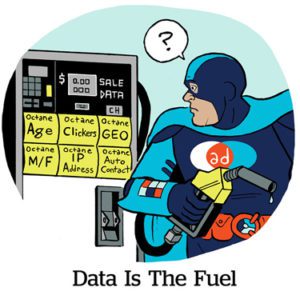The US Hispanic population is growing by leaps and bounds.
But TV advertisers are still throwing darts at the wall to reach them.
The Spanish-language media company TelevisaUnivision unveiled a Hispanic household data graph during this year’s upfronts, which should bring buyers closer to their targets. And last week, Omnicom Media Group (OMG) became the first agency to include the new graph in its identity solution for campaign planning and measurement.
The missed targets, for the most part, are a result of bad data intake from underrepresentative panels that skew census-level data sets, according to Kelly Metz, managing director of linear and advanced TV activation at OMG.
The Hispanic audience reach numbers OMG achieved with legacy data sets were just “wrong,” Metz told AdExchanger. And without accurate data for campaign planning, she added, “all of the downstream tactical investments become misaligned.”
Eyes on identity
TelevisaUnivision’s data graph was spurred on by the industry’s “push toward identity-based marketing,” said Dan Aversano, SVP of data, analytics and advanced advertising at TelevisaUnivision.
TelevisaUnivision uses first-party account log-ins, IP addresses and purchase data to create its IDs. The network also uses automatic content recognition and set-top box data to resolve its user IDs at the household level, Aversano said.
OMG can then match its advertiser first-party IDs to TelevisaUnivision’s household graph within a data clean room environment, validate audience overlaps and target those audiences in scaled programmatic channels.
The reliable language targeting makes it feasible to produce and plan Spanish-language campaigns for marketers who have been on the fence about the consumer demo.
“Despite all the stats about the population’s growth,” Aversano said, “hundreds of national advertisers still find reasons not to buy Spanish-language media.”
Putting it in perspective
Third-party and panel-based data sets are partly to blame for advertisers’ hesitation to plan around Hispanic audiences.
But the census-level data available for advertisers is often out of context, too, Aversano said.
For example, Aversano said some advertisers who prioritize ROAS are reluctant to buy against Spanish-language media because the census sets those households at a lower median income compared with the general population.
But that data point is misleading because it doesn’t take age into consideration. In 2018, the most common age (i.e., the mode) for Spanish-language Americans was 11 years old, compared with 58 years of age for non-Hispanic white Americans, according to Pew Research Center. So, household income calculations are not a fair comparison. (If anything, advertisers pay a pretty penny to reach an engaged younger audience.)
The reality is that the US Hispanic population keeps growing, Aversano said, and an “overwhelmingly significant portion” of the country’s economic stimulation, including increased home ownership and GDP growth, comes from the demo.
Still, the challenges to date “makes it really easy for advertisers to say no” to buying against Spanish-language media, Aversano said.
To elicit advertiser demand, Metz added, agencies need accurate and representative data to convince buyers at the campaign level that their impressions will make an impact.
Righting representation
TelevisaUnivision tested its new ID graph with data intelligence company Truthset to compare the solution with third-party data and measurement vendors (which were not disclosed).
On average, four in 10 Hispanic individuals are not accounted for in third-party data sets, according to Truthset. “And if bad data goes in, bad data comes out,” Aversano said.
One national advertiser’s Hispanic-targeted campaign, for example, delivered roughly 70% of its impressions to non-Hispanic households. Many third-party data sets are inaccurate and “flat-out wrong,” Aversano added.
Bad data is why non-Hispanic audiences see Spanish-language video ads quite often, for example, Metz said, noting that Hispanic audience data sets were painfully paltry on the buy side, too.
Legacy TV panels try to model Hispanic TV viewership in the US based on segments as small as 6,000 households, Metz said. And when vendors try to make those panels into census-representative models using survey-based data, the pool of addressable audiences gets even smaller.
Some campaign plans would come back to OMG projecting 100% reach for Hispanic audiences. “We knew that wasn’t true,” Metz said. OMG found that those same campaigns missed millions of linear Hispanic household TVs when the agency compared larger TV data sets against actual campaign delivery.
TelevisaUnivision’s first-party data can help funnel advertiser dollars to the right audience. But that data needs to make it through a clean room before advertisers can do anything with it.
And “that’s not just lip service,” Aversano said. “Data clean room technology is a central part of appropriate data sharing that protects against mistakes, not just malice.”
Audience match rates are much higher in a data clean room because higher privacy guardrails mean more first-party audience data is uploaded, anonymized and available for advertisers to buy at scale.
“Clean rooms show us the campaign attributes we need to see without having to touch any personal identifiable information,” Metz said. Specifically, purchase data from retail media networks can feed into attribution models to sharpen TV campaign planning.
“OMG has six advertisers using always-on attribution for television right now,” Metz said, “and that number is only going to grow.”
Attribution is becoming an increasingly important step to proving the valuation of TV, she said. But the first step to attribution, she added, “is valid identity.”
















